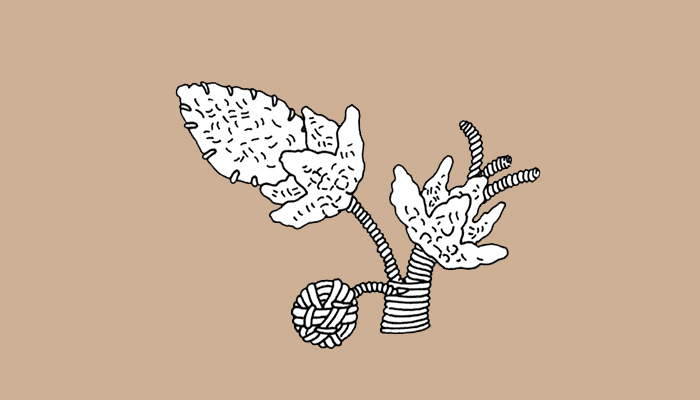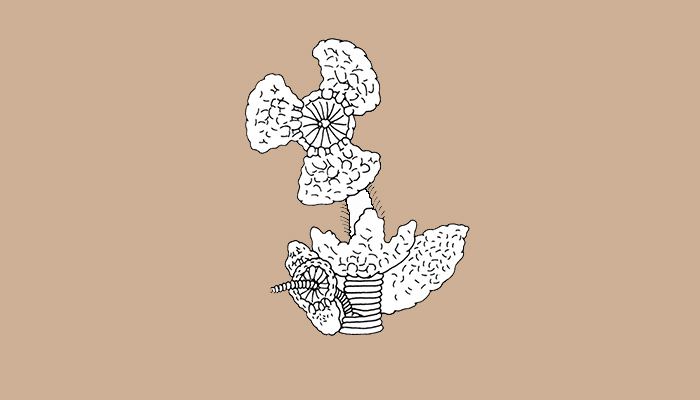Chimu, Labyrinths of a sacred costume
The agricultural explosion
The composition of the metaphor represented in this Chimú costume demanded that weavers created an exceptional kind of weaving based on the plain weave: volumetric motifs of different compositions that represented common vegetables from the cultivated Andean fields, in some cases recognizable by their leaves, their flowers or their fruits. It is possible to identify groupings composed of tuber flowers and leaves, cotton capsules, and flowers and cobs of corn. Along with these compositions, other groupings were found that evidently referred to vegetable motifs, unidentifiable for us, but easily recognizable to Chimú artisans.
This veritable ‘textile garden’ was made following a concise pattern, since certain types of representations can be found only in certain locations on the garments. For example, where personages with staffs placed in smaller spaces and where double concentric circles appear, we find arrangements of tuber leaves and flowers in combinations that are not found elsewhere in the costume.











































